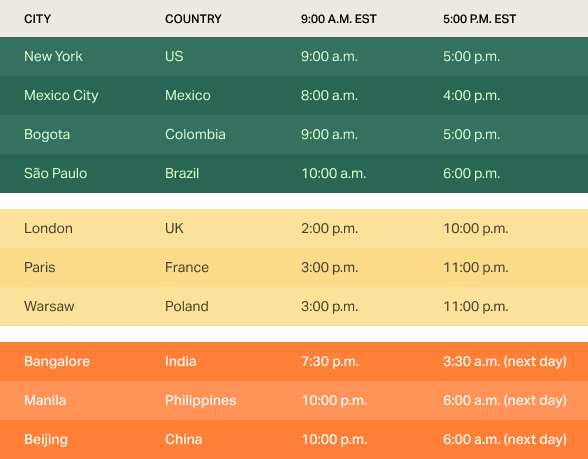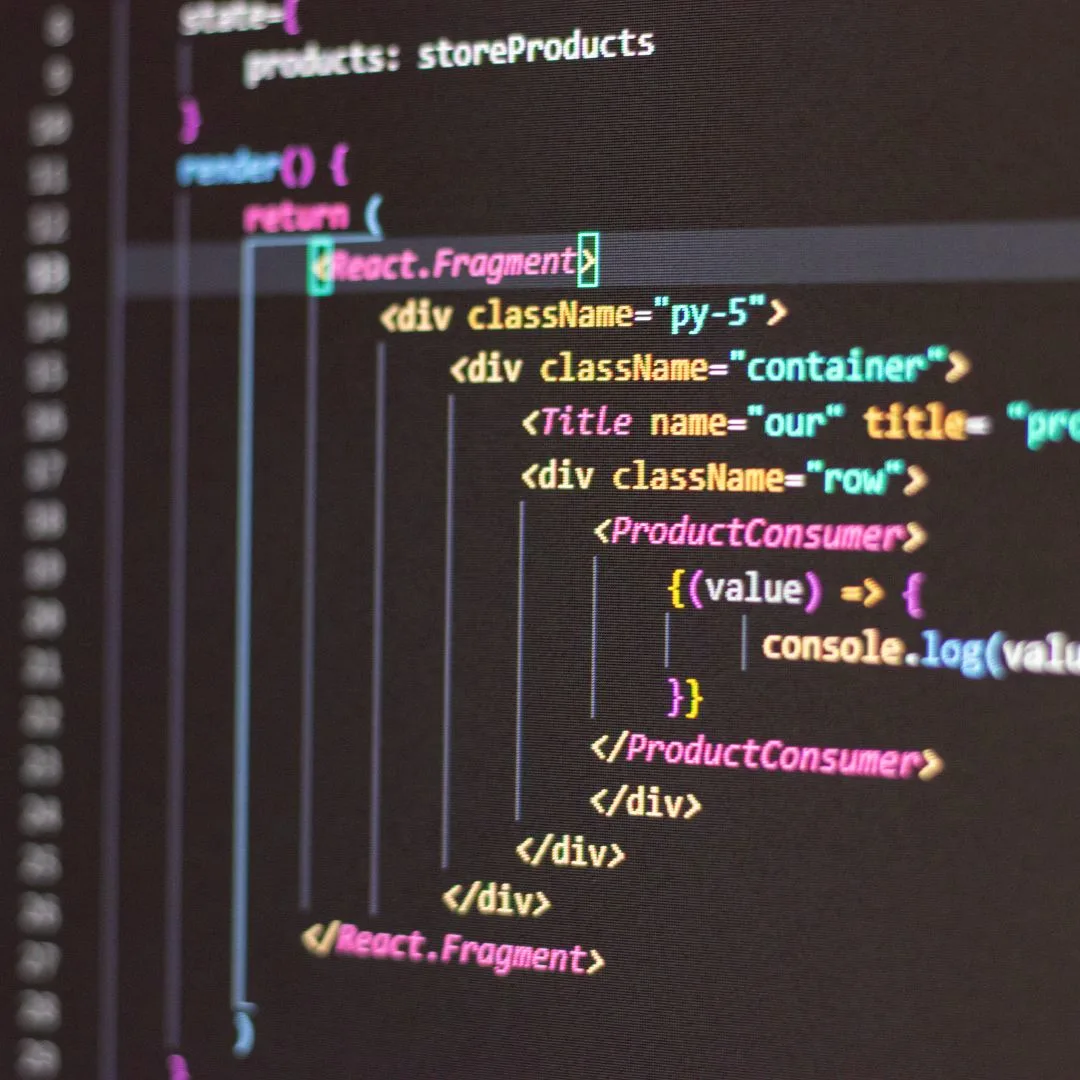Key Takeaways
- You can find skilled React developers through job boards, freelance platforms, referrals, or recruitment partners. Sourcing in Latin America offers US companies the best balance of cost savings (up to 66%), time zone alignment, and technical expertise.
- The best React developers combine essential technical skills (React fundamentals, JavaScript, state management) with crucial soft skills like clear communication, ownership mentality, and problem-solving abilities.
- A structured hiring process with role-specific interview questions and practical assessments helps you identify developers who can build scalable applications and collaborate effectively with your team.
Whether you’re building your first front-end team, scaling up after landing funding, or simply adding more hands to move faster, finding and hiring the right React talent can be tough. The demand is high, the skillsets vary widely, and the best candidates tend to get snapped up quickly.
This guide is here to make that process easier.
We’ll walk you through what skills matter most (and which are just nice to have), how much you should budget depending on where you’re hiring from, and the smartest ways to source and evaluate candidates, whether you’re hiring locally or expanding your search internationally.
If you’re looking for practical, no-fluff guidance on how to hire a great React developer, you’re in the right place.
What Does a React Developer Do?
React developers build interactive user interfaces for web applications using the React JavaScript library. They create the parts of your application that users see and interact with, from simple forms to complex dashboards.
They specialize in component-based development, meaning they build reusable pieces of code that can be combined to create sophisticated user experiences. This makes applications easier to maintain and faster to update as your business grows.
React developers (sometimes called React.js or ReactJS developers) typically handle everything from translating design mockups into functional interfaces to optimizing application performance and integrating with backend APIs. They work closely with designers to ensure the user experience matches the intended design, and with backend developers to make sure data flows seamlessly between systems.
Unlike full-stack developers, React developers focus primarily on the front-end experience. They don’t typically manage servers, databases, or deployment infrastructure unless they’re working in a full-stack capacity. Their job is to make your application fast, responsive, and user-friendly across different devices and browsers.
How Much Does It Cost to Hire a React Developer?
In the US, hiring a React developer typically costs between $98,000 and $169,400 annually, but hiring in Latin America can reduce that by 54-66% while maintaining the same quality and expertise.
For many US companies—especially startups or lean teams—six-figure salaries for even junior devs is becoming harder to sustain. As salaries continue to rise and top local talent gets snapped up quickly, hiring domestically can stretch your budget without necessarily delivering stronger outcomes.
That’s why more teams are exploring international hiring as a way to access skilled React developers without overextending their resources.
Based on our placement data, here’s how average salaries compare between the US and Latin America:
%205.51.59%E2%80%AFp.%C2%A0m..webp)
These savings don’t reflect differences in skill or professionalism—they reflect different costs of living.
Latin American React developers often have the same education, experience with US companies, and technical expertise as their US counterparts, but live in markets where salaries naturally align with local economic conditions.
Many of our clients find they can hire senior-level React developers in Latin America at prices they’d pay for junior developers in the US, or build entire front-end teams for the cost of one US hire.
What Skills Should You Look for When Hiring a React Developer?
Great React developers need more than technical skills—they also need strong communication, ownership mindset, and strategic thinking to build applications that scale with your business.
Understanding what to look for in a React developer depends heavily on the seniority level you’re targeting:
- A junior developer might excel at building basic components and following established patterns, but they’ll need guidance on complex state management and architectural decisions.
- A mid-level developer should be able to handle most React features independently and contribute to architectural discussions.
- A senior developer should be able to design scalable React applications, mentor other developers, and make strategic technical decisions.
The key is matching your expectations to the candidate’s experience level. Expecting a junior developer to architect complex applications from scratch will lead to frustration, while hiring a senior developer for simple component work might be overkill for your needs.
Setting realistic expectations for each seniority level helps you evaluate candidates fairly and ensures you’re not dismissing strong candidates who might be perfect for your actual requirements.
Here’s how React developer skills typically progress across experience levels:
%205.53.21%E2%80%AFp.%C2%A0m..webp)
Regardless of seniority level, all React developers should demonstrate certain fundamental capabilities.
Here are the core skills to evaluate:
Hard skills (the must-haves)
The strongest React developers bring depth in these fundamental areas that apply across all experience levels:
- React fundamentals: All developers should understand component lifecycle, JSX syntax, props and state management, and event handling. They should be able to explain when to use different React patterns and build functional components effectively.
- JavaScript proficiency: Since React is built on JavaScript, strong ES6+ knowledge, including promises, async/await, destructuring, and modules, is essential for developers at any level. They should write clean, maintainable code that follows modern JavaScript practices.
- Component architecture: Developers should think in components and understand how to break down interfaces into reusable, maintainable pieces. This includes understanding component composition and communication patterns.
- State management basics: All React developers should understand local component state and when to lift state up. More experienced developers should be familiar with global state solutions like Redux, Zustand, or Context API.
- API integration: Modern React applications depend on data from backend services. Developers should be comfortable making API calls, handling loading states, and managing error conditions.
- CSS and styling: Whether using CSS modules, styled-components, or utility-first frameworks, developers should create responsive interfaces that work across devices and browsers.
Soft skills (equally important)
Technical expertise only gets you so far. The best React developers excel in these areas:
- Problem-solving mindset: According to our recruiters who specialize in this role, excellent developers can explain not just what they built, but how they approached challenges and what they learned from mistakes. Look for candidates who can walk through their decision-making process when facing technical roadblocks.
- Communication skills: React developers collaborate across teams daily. They need to explain technical concepts to non-technical stakeholders, provide clear progress updates, and ask smart questions when requirements are unclear.
- Ownership and accountability: The best developers take full responsibility for their code from development through production. They proactively identify potential issues, suggest improvements, and follow through on commitments without micromanagement.
- Adaptability: New React features, changing browser standards, and evolving user expectations mean developers must learn continuously and adapt their approaches based on project needs.
- User-focused thinking: Great React developers think about user experience, performance, and accessibility. They consider how their code affects real people using the application.
Nice-to-have skills (the differentiators)
These skills aren’t essential but give candidates an edge, especially for senior positions:
- Advanced state management: Deep experience with Redux, Zustand, or React Query for complex application state management and data fetching strategies.
- TypeScript expertise: Adds type safety and improves code maintainability, especially valuable for larger applications or teams working on long-term projects.
- Testing frameworks: Experience with Jest, React Testing Library, or Cypress shows developers who think about code quality and long-term maintainability.
- Performance optimization: Knowledge of React profiling tools, code splitting, lazy loading, memoization, and other optimization techniques for building fast applications.
- Build tools and deployment: Familiarity with webpack, Vite, or modern build tools, plus understanding of CI/CD pipelines and deployment strategies.
- Mobile development: React Native experience can be valuable if you’re building mobile applications or planning to expand to mobile platforms.
Where Can You Find and Hire Great React Developers?
You can find strong React developers through job boards, referrals, freelance platforms, and recruiting partners—but your location and sourcing strategy will determine both quality and cost.
Here’s how to approach each option strategically.
Deciding between local, national, or global talent
Before you start thinking about how to source candidates, you need to get clear on where you’re open to hiring from.
React development is remote-friendly by nature—developers can work effectively from just about anywhere with a good internet connection.
That means you don’t need to limit your search to your city—or even your country—unless in-person collaboration is essential for your team.
Deciding upfront whether you’re looking for someone local, remote within the US, or internationally based will shape which sourcing channels make the most sense and how far your budget can stretch.
Each approach offers distinct advantages depending on your needs:
- Local/in-office talent provides face-to-face collaboration and easier coordination, but significantly limits your talent pool and comes with the highest salary expectations. This works best for companies that require frequent in-person collaboration or have complex security requirements.
- Remote US-based talent expands your options considerably while maintaining familiar business practices, time zones, and cultural alignment. However, you’ll still pay US market rates, which can strain budgets, especially for growing companies.
- Offshore talent opens access to a much broader pool of skilled developers at significantly lower costs.
Latin America stands out for development over other offshore regions because of the similar working hours, strong English proficiency levels, and average salary expectations that are 50-70% less than US average rates.
Other regions like Eastern Europe and South/Southeast Asia also offer skilled offshore React developers, though with time zone challenges for US companies.

Choosing the right sourcing channel
Different platforms and approaches work better for different hiring strategies
%205.55.11%E2%80%AFp.%C2%A0m..webp)
The most effective approach often combines multiple channels—starting with referrals for quality, supplementing with targeted job boards for reach, and considering recruitment partners for specialized needs or international hiring.
Why working with a recruiting partner makes a difference when hiring React developers
A trusted recruitment partner can help ensure you make the right hire, access more qualified candidates faster, and avoid delays.
Many companies hire React developers successfully on their own. If you have strong technical evaluation skills, time to screen candidates thoroughly, and experience with developer hiring, a DIY approach can work well.
However, when the stakes are high, the timeline is tight, or you’re hiring outside your usual network, working with a recruiting partner makes a big difference.
This is especially valuable when hiring internationally. Navigating global job boards, evaluating unfamiliar resume formats, and understanding local market conditions can be challenging for companies new to international hiring.
A recruitment partner experienced in sourcing developers in Latin America or other regions can help you:
- Access pre-screened candidates who have been evaluated for both technical skills and cultural fit
- Navigate international hiring complexities, including contracts, compliance, and payroll
- Move faster by leveraging established candidate networks and streamlined processes
- Make competitive offers that reflect local market conditions without overpaying or undervaluing talent
The investment in a recruitment partner often pays for itself through faster time-to-hire, better candidate quality, and reduced risk of mis-hires, especially when you factor in the cost savings available through hiring Latin American developers.
How to Hire the Best React Developer: Best Practices
Finding great React developers requires more than posting a job and hoping for the best. The companies that consistently make strong hires follow a systematic approach that evaluates both technical ability and cultural fit.
Here are the practices that make the biggest difference:
Stage 1: Before and during sourcing
Define your technical requirements clearly
Don’t ask for a dev who can do everything. Be specific about which React features matter most for your projects—do you need someone expert in server-side rendering, complex state management, or performance optimization?
According to our recruiters, the most successful hiring processes start with clients who can clearly articulate what type of work the developer will do most: building new features, optimizing existing code, or handling data-heavy interfaces.
This clarity helps you match candidates with the right strengths rather than looking for generic “React experience.”
Write job descriptions that attract the right talent
Your job description should do more than list requirements—it should sell the opportunity and filter for genuine interest. Include specific details about the React projects they’ll work on, the team they’ll collaborate with, and the impact their work will have on users or business goals.
Avoid vague requirements like “3+ years React experience” in favor of specific examples: “Experience building responsive dashboards that handle real-time data updates” or “Comfortable optimizing React applications for mobile performance.”
Here’s another tip from our recruiters: don’t have rigid degree requirements, you might just rule out great devs who’ve learned elsewhere. Skills-based hiring approaches expand candidate pools by 6.1x globally, making it beneficial to focus on relevant capabilities rather than diplomas.
For more comprehensive guidance on crafting effective job descriptions, check out our guide on how to write job descriptions for developers.
Stage 2: Screening and evaluation
Use practical assessments over theoretical questions
Rather than asking candidates to recite React concepts, give them a small, real-world coding challenge that reflects the work they’ll actually do. This could be building a simple component, debugging existing code, or implementing a specific feature.
SHRM research reveals that 54% of organizations now use pre-employment technical assessments, and 78% those that do report an improvement in hire quality.
Look for communication and collaboration skills
Technical skills are just the starting point. The best React developers can explain their architectural decisions, walk through their code with non-technical stakeholders, and collaborate effectively across teams.
During interviews, pay attention to how candidates explain their past projects. Can they describe what they built without getting lost in technical details? Do they mention collaborating with designers, product managers, or backend developers? These signals indicate someone who can work well in a team environment.
Stage 3: Making the offer and closing the deal
Move quickly with competitive offers
Top React developers often have multiple opportunities, especially in today’s competitive market. Once you’ve identified the right candidate, move fast with a compelling offer that includes growth opportunities and clear expectations.
One mistake companies make during the hiring process is having too long of a process or multiple technical assessments. Candidates don’t want to spend weeks going through extensive evaluation processes, especially when they have other options.
Focus on total compensation and growth potential
While salary is important, we often see that developers also value learning opportunities, work-life balance, flexible hours, and ownership of their work.
Be prepared to discuss career growth paths, interesting technical challenges, and how their work will impact the business.
When competing for top talent, emphasize what makes your opportunity unique: the chance to work with cutting-edge technology, solve interesting problems, or make a meaningful impact on users or the business.
Top Interview Questions for Hiring React Developers
To find the best React developer, you need to go beyond resumes—these interview questions uncover how candidates think, problem-solve, and collaborate.
Here are five questions that reveal both technical competency and work approach:
“Walk me through a recent React project you built from scratch. What challenges did you face and how did you solve them?”
This open-ended question reveals practical experience, problem-solving approach, and communication skills. Listen for candidates who can explain not just what they built, but why they made specific architectural decisions and how they handled roadblocks.
Strong answers include specific details about component structure, state management choices, performance considerations, and how they collaborated with other team members. Red flags include vague descriptions, inability to explain technical decisions, or focusing only on what they built rather than how and why.
“How do you decide between using local component state versus a global state management solution?”
This question tests understanding of React’s core concepts and architectural thinking. Great React developers know when complexity justifies additional tools and can explain the trade-offs clearly.
Look for answers that discuss factors like component sharing, data flow complexity, and team coordination. Candidates should mention specific scenarios where they’ve used both approaches and explain their decision-making process.
“Tell me about a time when you had to optimize a React application’s performance. What was your approach?”
Performance optimization separates good developers from great ones. This question reveals experience with production applications and systematic problem-solving abilities.
Strong candidates will mention specific tools (React DevTools, Lighthouse), techniques (code splitting, memoization, lazy loading), and measurable results. They should demonstrate understanding that optimization starts with measurement, not guesswork.
“How do you typically handle feedback, both positive and negative, from peers or managers? Can you share an example?”
According to our recruiters, this question is particularly telling because it reveals self-awareness, adaptability, and collaboration skills. Great developers welcome feedback and can incorporate it constructively while maintaining their own technical judgment.
Look for candidates who can share specific examples of receiving feedback that led to meaningful improvements in their work or approach. Avoid candidates who become defensive about feedback or claim they rarely receive any.
“Describe a situation where you had to work with unclear or changing requirements. How did you handle it?”
React development often involves evolving requirements and shifting priorities. This question tests adaptability, communication skills, and ownership mentality.
Strong answers show candidates who ask clarifying questions, communicate proactively about impacts of changes, and find ways to deliver value even when requirements aren’t perfectly defined. This reveals developers who can work independently while staying aligned with business goals.
{{prevetted-banner}}
Common Mistakes to Avoid When Hiring React Developers
Even with a solid process, several common pitfalls can derail your React developer hiring efforts. Here are the most costly mistakes and how to avoid them:
1. Focusing only on years of experience with React
React itself is relatively new, and the ecosystem evolves rapidly. A developer with two years of React experience but strong JavaScript fundamentals and learning ability may outperform someone with five years of outdated React practices.
Instead of requiring specific years of React experience, focus on JavaScript proficiency, problem-solving approach, and ability to write maintainable code. Ask about recent projects and how they’ve adapted to new React features or patterns.
2. Expecting one developer to handle everything front-end
Modern front-end development includes many specialized skills: React development, design implementation, performance optimization, testing, build tools, and deployment. Expecting one person to excel at everything often leads to overwhelmed hires or subpar results in key areas.
Be clear about your primary needs: do you need someone focused on building React components, someone who can handle the entire front-end architecture, or someone who can bridge front-end and backend systems? Hire for depth in your most critical areas rather than trying to find a “front-end unicorn.”
3. Overlooking soft skills and remote collaboration abilities
Technical skills get candidates in the door, but soft skills determine long-term success, especially in remote or distributed teams.
A brilliant React developer who can’t communicate clearly, struggles with feedback, or works in isolation can hurt team productivity.
During interviews, evaluate communication skills, ask about collaboration experiences, and pay attention to how candidates ask questions or explain their thinking. These “soft” skills are actually crucial for team-based development work.
4. Not verifying problem-solving approach
React developers will encounter bugs, performance issues, and integration challenges regularly. Candidates who can’t explain how they troubleshoot problems or learn new concepts will struggle when facing real-world development challenges.
Ask specific questions about debugging approaches, how they research solutions, and examples of learning new React features or related technologies. Look for systematic thinkers who can break down complex problems into manageable pieces.
Final Thoughts
The best React developers think strategically about user experience, code maintainability, and business impact. They communicate clearly across teams, take ownership of their work, and adapt quickly to changing requirements.
At Near, we understand that finding the right React developer means more than matching technical requirements. We take time to understand your team dynamics and business goals, then match you with pre-vetted Latin American React developers who fit your specific needs.
Our candidates work during your business hours and deliver exceptional quality at rates up to 66% lower than US-based developers.
Ready to find a React developer who can build scalable applications while fitting your budget? Book a free consultation call with our team today, and we’ll help you find the perfect match within 21 days.
Frequently Asked Questions About Hiring React Developers
Should I outsource React development or build an in-house team?
It depends on your team’s current capacity and long-term goals. If you need to move fast or lack internal front-end expertise, outsourcing React development can help you access experienced developers quickly and cost-effectively.
But if you’re building a product that requires deep, ongoing collaboration, hiring in-house offers better continuity and ownership.
If you are looking to outsource, here are 5 ReactJS offshore development companies to consider.
What’s the difference between React and React Native developers?
React is used for building web applications, while React Native is for mobile app development.
Although both use similar syntax and component-based architecture, they rely on different environments—React renders in the browser, and React Native renders using native components for iOS and Android.
Be clear on your platform needs before hiring. If you need a React Native developer, see our guide on how to hire a great React Native developer.
Is React still in demand?
Yes. React remains one of the most popular JavaScript libraries for front-end development, widely used by startups and enterprise teams alike.
According to the 2024 Stack Overflow Developer Survey, React is still one of the top two frameworks developers work with, making it a smart choice for scalable, component-based UI.













.png)






%20(1).png)
%20(1).png)
